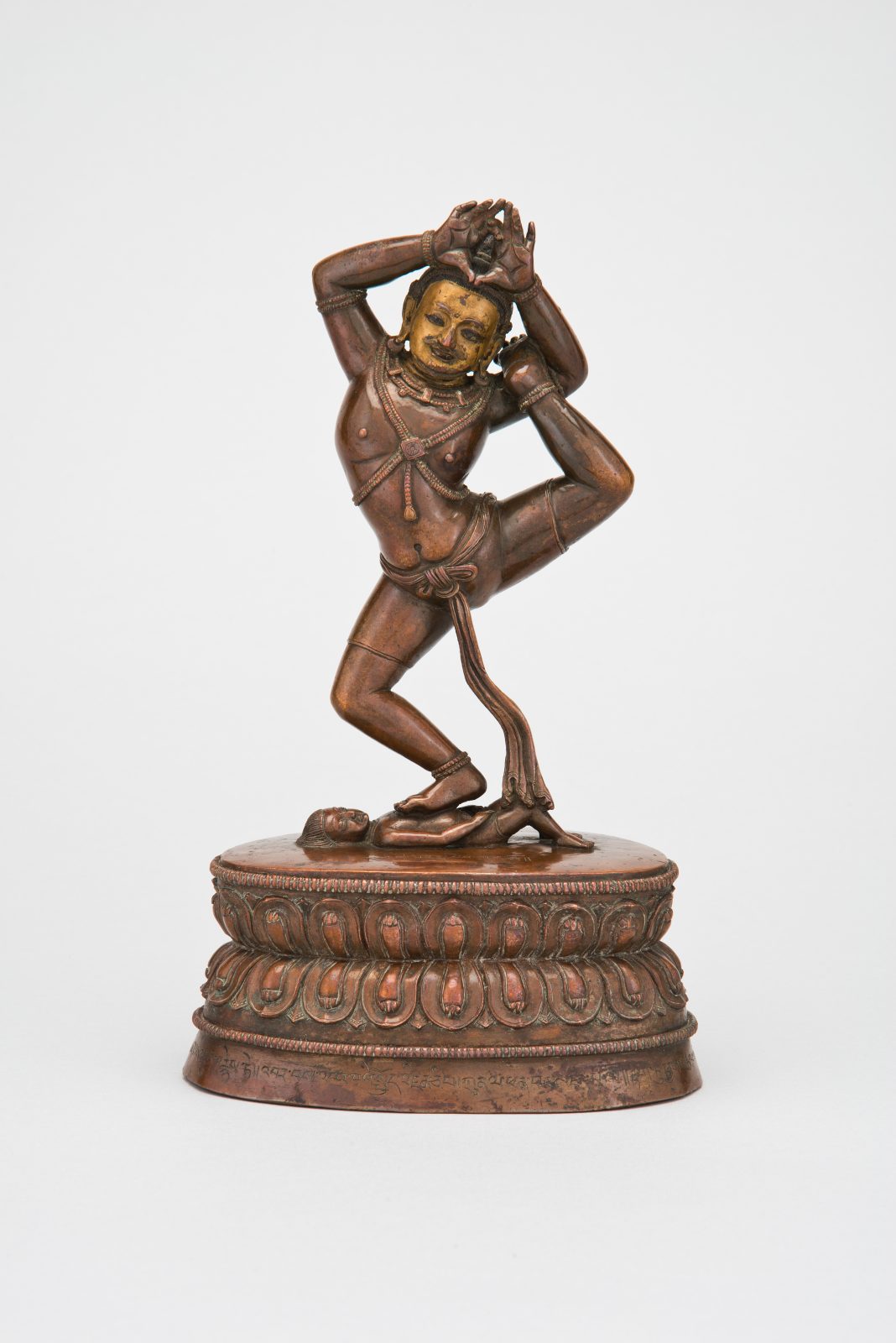

This week’s meditation session is led by Do Tulku Rinpoche and the theme is Realization. The guided meditation begins at 7:22.

Mahasiddha Jalandhara; Tibet; ca. 16th century; Copper alloy; Rubin Museum of Himalayan Art; C2003.13.4
Legendary men and women called mahasiddhas, or great spiritually accomplished ones, are considered to be among the first teachers of tantric Buddhist practices. Usually of ordinary occupations, such as wandering monk, weaver, or farmer, they are often depicted in various yogic positions, flying or dancing, wearing little or no clothing, drinking alcohol, and consorting with members of the opposite sex. In their wide variety and unconventional behavior, the mahasiddhas exemplify tantric Buddhist practices, which offer many paths to realization. They are celebrated as real people who embodied enlightenment through tantric practice.
The Indian siddha depicted here in an active posture is known for his many yogic feats. It is said that he could manifest his body in many places at the same time and live in many bodily forms in widely disparate lands simultaneously.

Dolpo Tulku Rinpoche was born into a Lama family in Dho Tarap, Dolpo, in 1982. He became a monk at the age of nine and was recognized by Dilgo Khyntse Rinpoche to be the reincarnation of the third Dolpo Nyinchung Tulki Rinpoche shortly thereafter. When he was fifteen years old, he entered Nyingma Ngagyur Institute, where he studied, debated, and researched all the sutra and tantra teachings of the Buddha for ten years under His Holiness Penor Rinpoche. He continues to teach at the Ngagyur Nyingma Institute for several months out of the year. The rest of his time, he visits Dolpo and travels worldwide to give public talks and Buddhist lectures, teaching people techniques to retain peaceful minds.
Get the latest news and stories from the Rubin, plus occasional information on how to support our work.